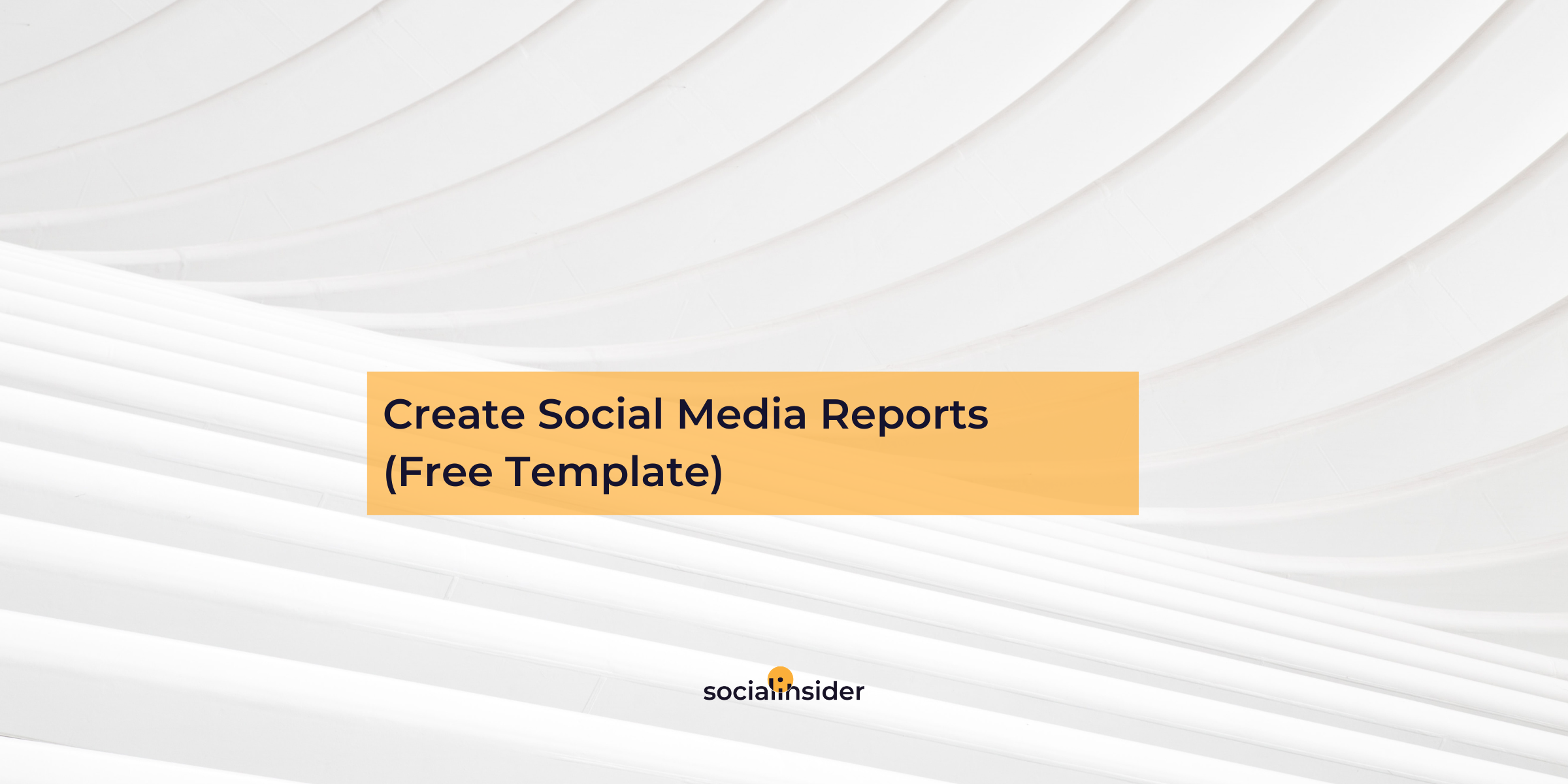
Creating monthly or yearly social media reports for your clients can be overwhelming without a proper plan or the right tools.
It requires in-depth knowledge of data and interpreting what the numbers tell you, insights into the dynamics of the social networks, and sometimes even a lot of manual work.
In fact, in a recent social media survey, 31% of marketers spend up to 10 hours on reports, compared to the 4 hours outlined as industry normal.
In this article, I'll dive into what you should follow if you want to create a monthly social media report for your clients.
I've also included a social media report template (no gated content, free of use) to help you save time and a lot of energy.
Let's take a look at what I'm talking about.
How to build a social media report
1. Seven steps to build a social report for your clients
- Define social media KPIs
- Set a timeframe for your social media reports
- Get cross-platform insights
- Define the most relevant information
- See how your clients rank against top competitors on social media
- Use data to tell a story
- Build an actionable plan
2. How to create social media reports
3. Top metrics to include in social media marketing reports
- Followers or fans growth
- Engagement and engagement rates
- Posts' and Stories' reach and impressions
- Brand hashtags' performance
- Story retention rate
- Post types
- Top posts
1. Seven steps to build a social media report for your clients
Whether you’re preparing reports for your own company or for your clients, it’s not enough to simply go through heaps of data without a clear goal in mind.
All reports need to follow a strategy focused on how you can make the most out of the information you find, how to select the right information, and how you can extract insights from all those numbers.
But don’t worry, we’ve created a checklist to get you through it.
- Define social media KPIs
- Set a timeframe for your social media reports
- Get cross-platform insights
- Define the most relevant information
- See how your clients rank against top competitors on social media
- Use data to tell a story
- Build an actionable plan
-
Define social media KPIs
What do I need from this report?
It’s as simple as asking this key question. Before you even start collecting data, ask yourself why these stats should be on this report. What do you want from your social media reports?
SocialMediaToday classified the reports in three categories:
- Regular reports - Use the specific metrics to show your progress on social. Make sure you include competitive social media benchmarks too.
- One-off reports - showcase qualitative reports and campaigns performance.
- Research reports - add insights on a particular topic or trend.
Depending on the social media report format you choose, make sure you do not focus on managing data solely. You have to extract the insights and trends that can drive outcomes for your clients or managers.
Simply put, keep the information in the report limited to your KPIs and use your expertise and social media landscape knowledge to analyze the data.
Identify the social media metrics that are in line with your goals and with wider business strategies.
Most smart business organizations insist on using KPIs because they want to amplify the potential acquisition and retention value that social media brings to their business.
Make sure your KPIs are:
- Specific
- Measurable
- Achievable
- Relevant
- Time-Limited
-
Set a timeframe for your social media reports
How far back is it really necessary to go?
This is strongly connected to your goals. Are you planning an annual report, or do you simply feel the past month could have brought in better results? Perhaps you’re actually just interested in your campaign performance.
Here’re the most frequent report timelines:
- Weekly reports
- Monthly reports
- Quarterly reports
- Yearly reports
- From campaign start to end
-
Get cross-platform insights
To fully understand how your brand is performing on social media, you need to dive into all social networks.
But instead of creating separate reports for each platform, it’s best to gather cross-platform insights side-by-side, to get an overview of where you have the biggest following or which audience is more engaged.
This will tell you if you’ve divided your content efforts across social channels correctly.

If, for example, most of your content goes on Twitter, but your Instagram audience engages with your posts the most, it might be time to switch strategies. This will definitely give value to any social media marketing report.
-
Define the most relevant information
Nowadays, there’s a lot of data and insights at the disposal of social media marketers.
So it’s important to not get overwhelmed and fight the impulse to include information about any and all stats that had a slight increase. Not all of them matter.
Think of your social media analytics report as a whole consisting of a few mini-reports that fit together like a puzzle.
The stats you choose to include need to be connected and paint a consistent picture.
Typically, a social media report contains information on:
- Followers growth: this shows you if your social channel is growing and if you’re gathering new potential leads
- Content monitoring reports: number of posts, type of content, top posts, user-generated content
- Engagement reports: are your followers liking, commenting, or sharing your posts?
- Conversion stats: do your followers click on your links?
- Reach and impressions: how far do your messages go?
- Audience stats and demographics reports: this shows where your public comes from, what language they speak, what time-zones they live in, etc.
-
See how your clients rank against top competitors on social media
To maximize the performance of your social media, you need to keep an open eye on the competitors' actions on social media.
Benchmarking allows you to measure your performance and compare it with your competitors or the overall industry performance.
Running a benchmark across your industries, you'll get:
- a better & improved content strategy
- your competitors' actions on social media
- the latest industry trends
- better budgeting planning
-
Use data to tell a story
Gather all of your stats and piece the information into a cohesive story about your social media performance.
While the idea might not be a revelation in the business's strategic management process, ensure that you will be able to paint clear pictures of what is working and what is not working on your marketing strategies when using social media.
Take our latest study on Instagram stories for example.
We looked at multiple metrics such as retention, exit rates across multiple stories, tap forward rates, reach, types of stories, to understand how many stories should you post, when people lose interest in your stories, or if your audience prefers image or video stories.
We learned that brands only post on average 7-8 stories per month, however, there is room for improvement.
Data strongly suggest that posting up to 5 stories per day ensures a retention rate of over 70%.
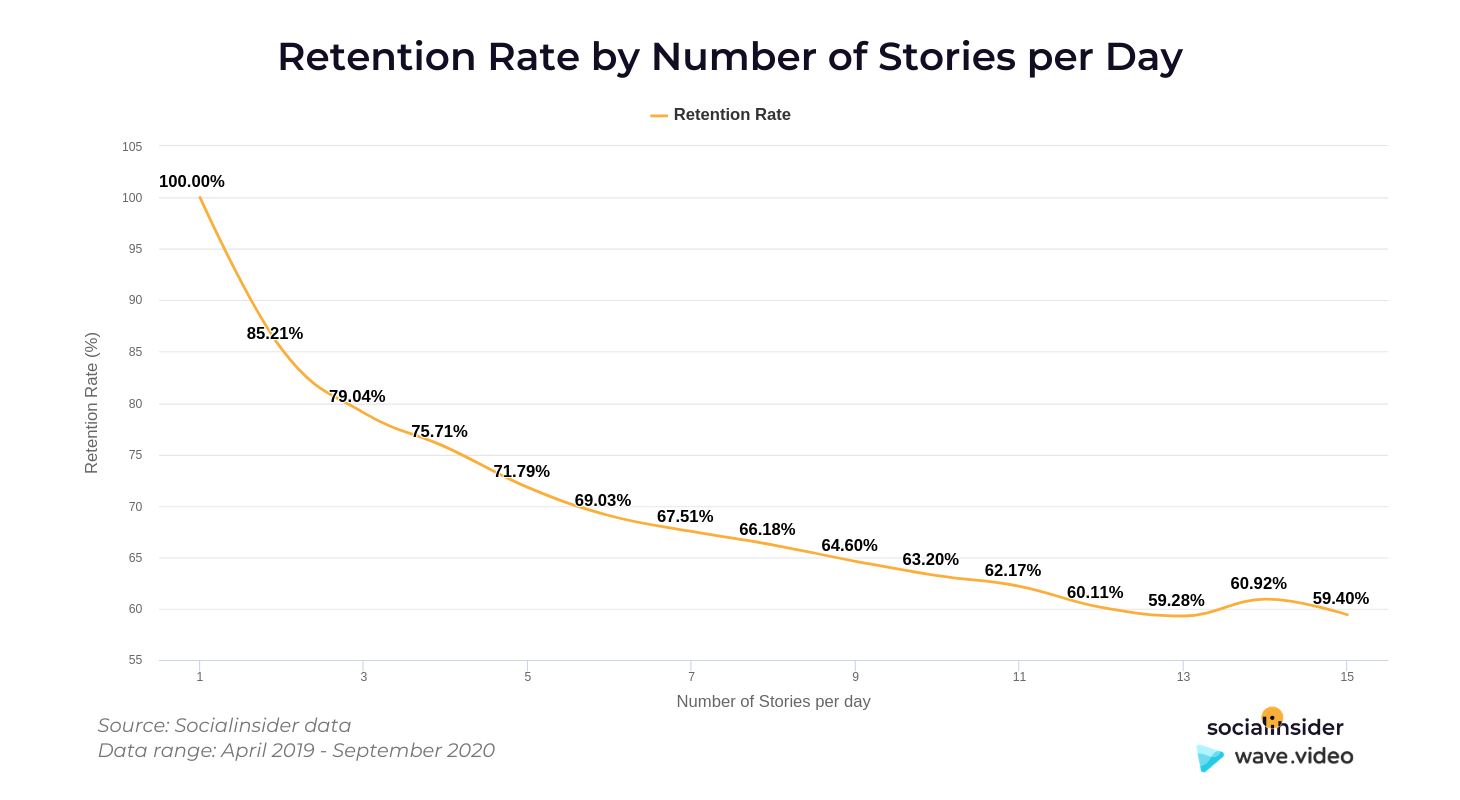
In case you're wondering, Instagram is the king of social media engagement. This is the story that engagement metrics tell us.
-
Build an actionable plan to act on your report insights
As a social media manager, you'll need to come up with actionable insights for your clients that are based on studying both your data, as well as competitive analysis results.
Before sending your monthly social media reports make sure you write down actionable insights for your industry.
One you’ve piece together all the data and reveal the story behind it, you need to draw clear conclusions and steps that will improve your clients’ content performance.

2. How to create social media reports
Depending on how picky your clients are about the information you include in your reports, you can prepare them manually or automatically.
There are advantages and disadvantages to both, but it’s ultimately up to you to prioritize what matters most to you when creating reports.
-
Manual reporting
The main advantage of a manual social media report is that you have the option to personalize and brand it as much as you’d like. However, the big downfall is that it’s extremely time-consuming to go through each platform one by one and piece so much data together
Facebook Analytics
In the “Insights” section from your left bar, you’ll have access to all of your performance metrics for your page, posts, followers, ads, stories. And you can download that data as an Excel or CVS report.
Instagram Analytics
Going to the “Insights” button of your profile page will give you a glimpse into your reach, interactions, followers, posts or Stories.


There’s tons of data at your fingertips. However, Instagram analytics are only available on your phone. The desktop app does not provide that information.
This means that when creating a report you need to manually write down every insight you need.
Twitter Analytics
In the Analytics section, Twitter will offer information on engagement, impressions, your top posts, your top mentions, as well as the top people who mention your brand.
However, you cannot download the data, and you’ll have to copy-paste it into your own report directly from the app.

LinkedIn Analytics
Moving your business to LinkedIn offers amazing opportunity, especially if your company offers business to business services or products.

You can tie your business page to your personal account and watch how many unique visitors, new followers or post impression you receive.
You’ll also be able to feature products and get information on your posts, as well as how your followers respond to your content
YouTube Analytics
YouTube Studio will offer all the information on your views, watch time, impressions CTRs, subscribers or top posts.
When accessing Channel Analytics, you’ll get in-depth information on Reach, Engagement and Audience.
Just like with Instagram, Twitter, and LinkedIn, you cannot download the data directly from the app and will need to manually fill in the information you need in your report.
-
Automated reporting
The main advantage of automatically downloading your social media reports from a social media analytics tool is time.
Firstly, there’s the time you gain by not filing in information manually, and secondly there’s the time it would take to put all the data together, instead of accessing everything in one dashboard.
Another advantage is that you ca download complete reports or reports regarding a single section.
Let’s say you wanted to know how your brand is doing across all social networks. You can start using Socialinsider and the Brands report feature.
All you need to do is utilize the “Brands” feature and have a quick understanding of how performance is doing. Download this report directly and add it to your presentation.

Need more data? Go to your profile and download all platform stats in one click.
Most third party tools also offer the option to download your reports in different formats: Excel, PDF, PowerPoint.
Another way is to import your data to Google Data Studio and combine data from multiple sources.

To get a general idea, here are the main advantages of social media analytics tools:
- More data, organized according to your needs.
- An overview of social media performance across platforms.
- Direct, presentation-ready downloadable reports.
- A clear overview of your top content across platforms.
- Data on hashtags and Stories.
3. Top metrics to include in social media marketing reports
There are valuable clarity metrics, and then there are vanity metrics.
Sometimes it can be tough to manage a lot of data, which can result in getting lost in a plethora of information.
That’s why it’s imperative to know what metrics really talk to social media performance.
Be wise.
Measure numerous metrics on your social media platforms, but make sure you choose the metrics that drive value for your clients and don't follow the vanity metrics.
Here are a few metrics you should consider:
- Followers or fans growth
- Engagement and engagement rates
- Posts' and Stories' reach and impressions
- Brand hashtags' performance
- Story retention rate
- Post types
- Top posts
-
Followers or fans growth
This stat will offer you an overview of how your page is growing or shrinking. You can watch how many followers per month you gain or lose, and which months have had a noticeable increase or decrease.

You can then go back to the content you’ve posted those months to better understand what makes you successful and what has performed below expectations.
If you’re losing following, that’s a clear sign that your page needs a make-over content-wise.
-
Engagement and engagement rates
Engagement is one of the most powerful metrics you have at your disposal.
There’s a few ways to look at engagement:
- The overall engagement shows how much people have liked, commented and, depending on the platform, shared the entirety of your content.
- The engagement rate per post shows how people interact, on average, with one of your posts
- The engagement rate per profile - shows the percentage of your followers who engage with everything on your profile.

In other words, engagement tells you how interesting your posts are, and if they manage to spark an action from your audience.
-
Posts’ and Stories’ reach and impressions
These two metrics are crucial in understanding how far your messages can go. Engagement might mean nothing if your posts don’t really reach a wide audience.

These two metrics tell you how many times your post has been viewed and how many unique views it has had.
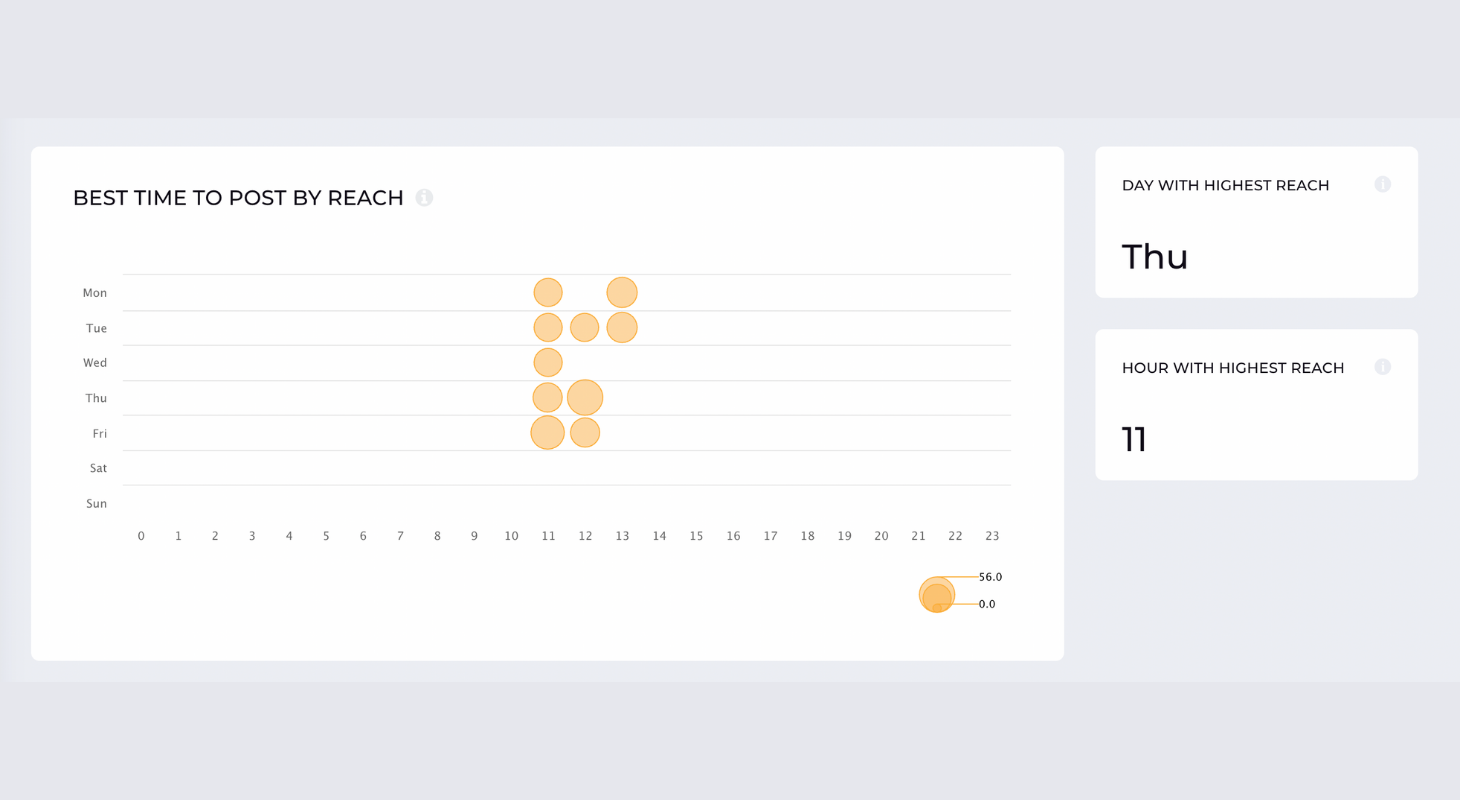
You can access that information both the total amount, as well as percentage-wise, to fully understand your posts or stories’ ability to reach your followers.
-
Brand hashtags’ performance
You can see how your brand’s hashtags are used and the engagement they might bring.
Below you can see the most used hashtags by H&M.

This information helps you keep track of the brand hashtags you use in your posts and how your audience engages with posts that include them.
By adding these metrics, you will create a social media analytics report that’s going to be worth the hype.
-
Story retention rate
When it comes to Stories, there’s another key metric besides engagement: retention rates.
This metric shows you if your audience is interested in your stories enough to watch every last one of them.

The retention rate is calculated as the impressions from the last story divided by impressions of the first story.
But tools also show you the retention rates by the number of stories published per day, which will help you understand where your biggest drop-offs happen.
-
Post types
It’s also important to understand what type of content your followers are expecting from you: images, videos or carousels.

Not only is it important to analyze how you divide your content between images, videos and carousels, but you must also look at what type of post results in higher engagement.
-
Top posts
A lot of insights can be gained just by looking at your top-performing posts, and understanding what are your social account’s strengths.
You’ll be able to see:
- what type of content you’ve used
- how long the captions were
- what were the main topics of interest
- what hashtags you’ve used
- engagement metrics
- impression metrics
- likes
- comments

Find out more metrics in this complete list you should follow
4. Download free social media report templates
Depending on your clients preferences, or even your own company style, you may choose to create your social performance in PDF, PowerPoint, or Excel.
It’s all a matter of what is more important to you: data flexibility or design.
So we’re sharing Socialinsider’s report templates as a starting point for your own reporting.
5. Social media reporting tools
Depending on whether you prefer doing your reports manually or automatically, there are a number of great tools out there that can offer you all the data you need.
While native analytics will offer in-depth information on your main metrics, third party tools like Socialinsider will put those metrics into context and add competitive analysis to your reports.
Some of your options include:
- Socialinsider
- Socialbakers
- Buffer
- SproutSocial
Socialinsider knows that report automation can improve your work. So you can enable automated reports in order to create and share business reports at a specific time interval.
So, are you ready to download your social media reports?
Socialinsider will help you automate your social media reporting process. Have your data delivered straight to your or your client’s inbox on a monthly or quarterly basis.
More than that, as we previously mentioned, we can assure you that Socialinsider offers Google Data Studio integration as well.
In other words, you can now connect your Socialinsider data to Google Data Studio and dig into your metrics.
If you're not very familiar with it, don't worry about it! We're here to help. So, this is how you can bring your social media data to Google Data Studio as quickly as possible.
Get ready to create in-depth and visually beautiful reports with Google Data Studio and Socialinsider.
Final thought
Social media reporting should not overwhelm you anymore. You just need to monitor all the metrics that matter to your business and select a reporting tool that can provide you with helpful data from your social media channel.
Present the insights clearly and in a context-driven way. Include your top campaigns, top followers, content and anything that worked or didn't work in your social media campaigns during the year.
Report and analyze social media performance for multiple business profiles and create social media benchmarks for your clients.
Related articles:
* This article was originally published here
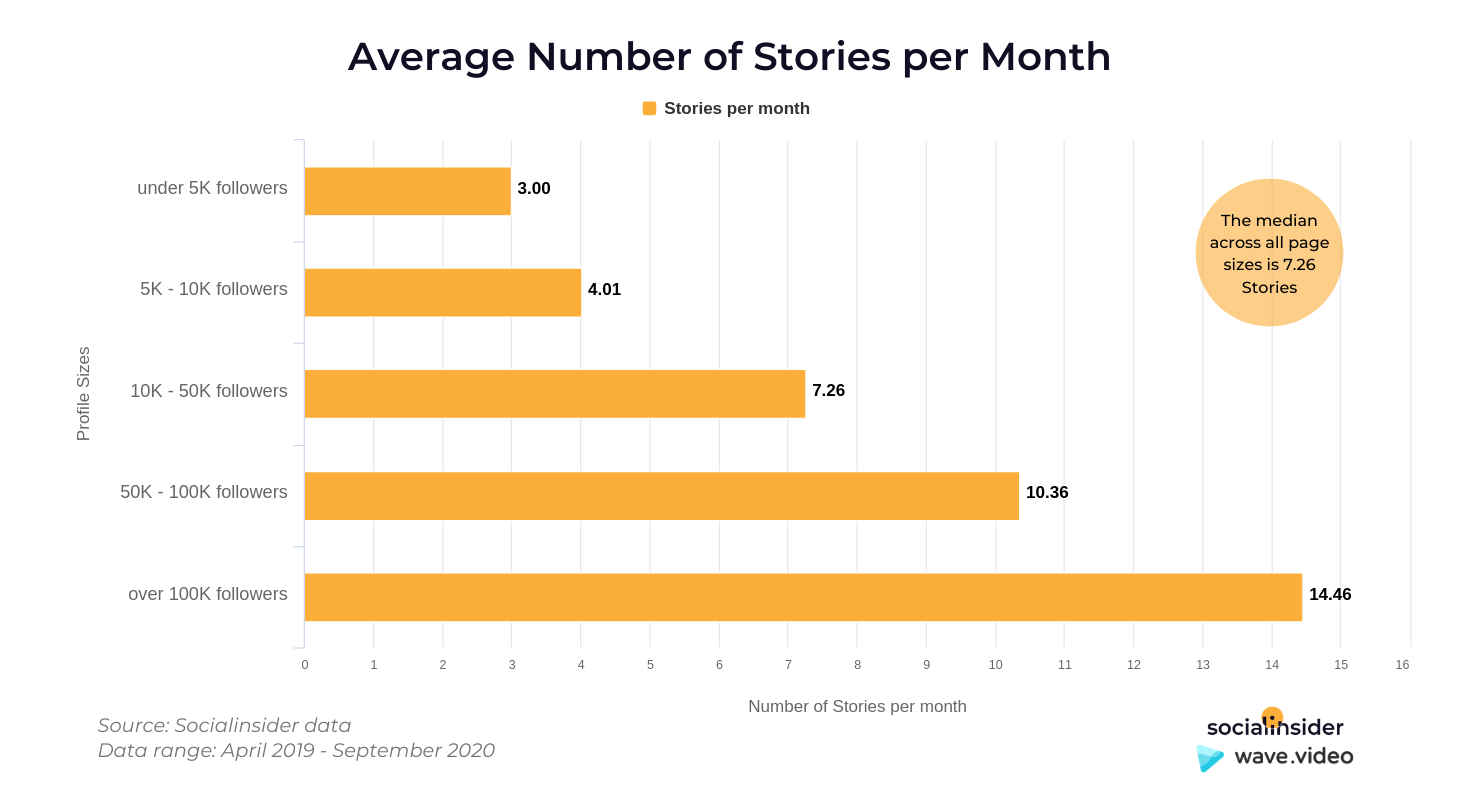
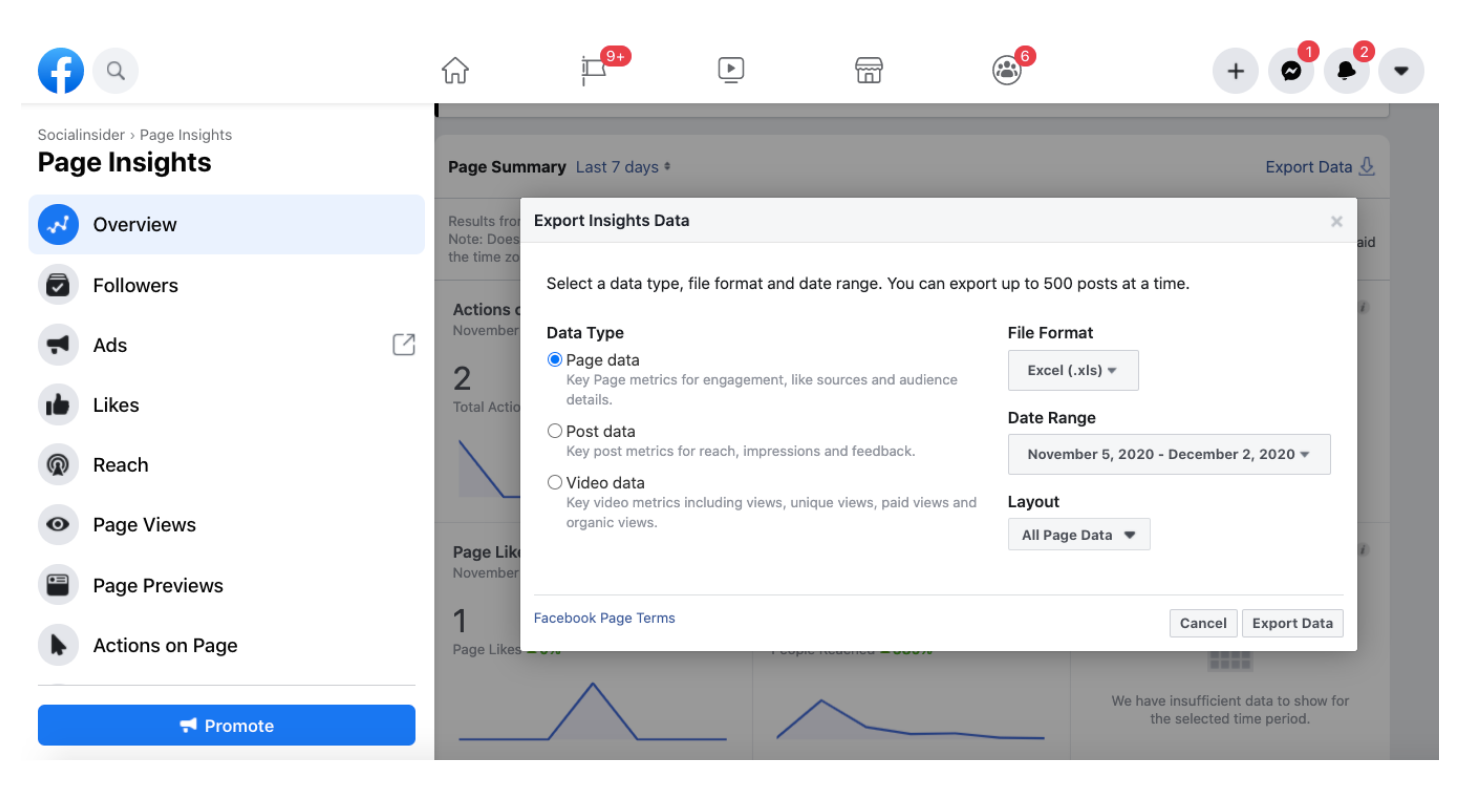
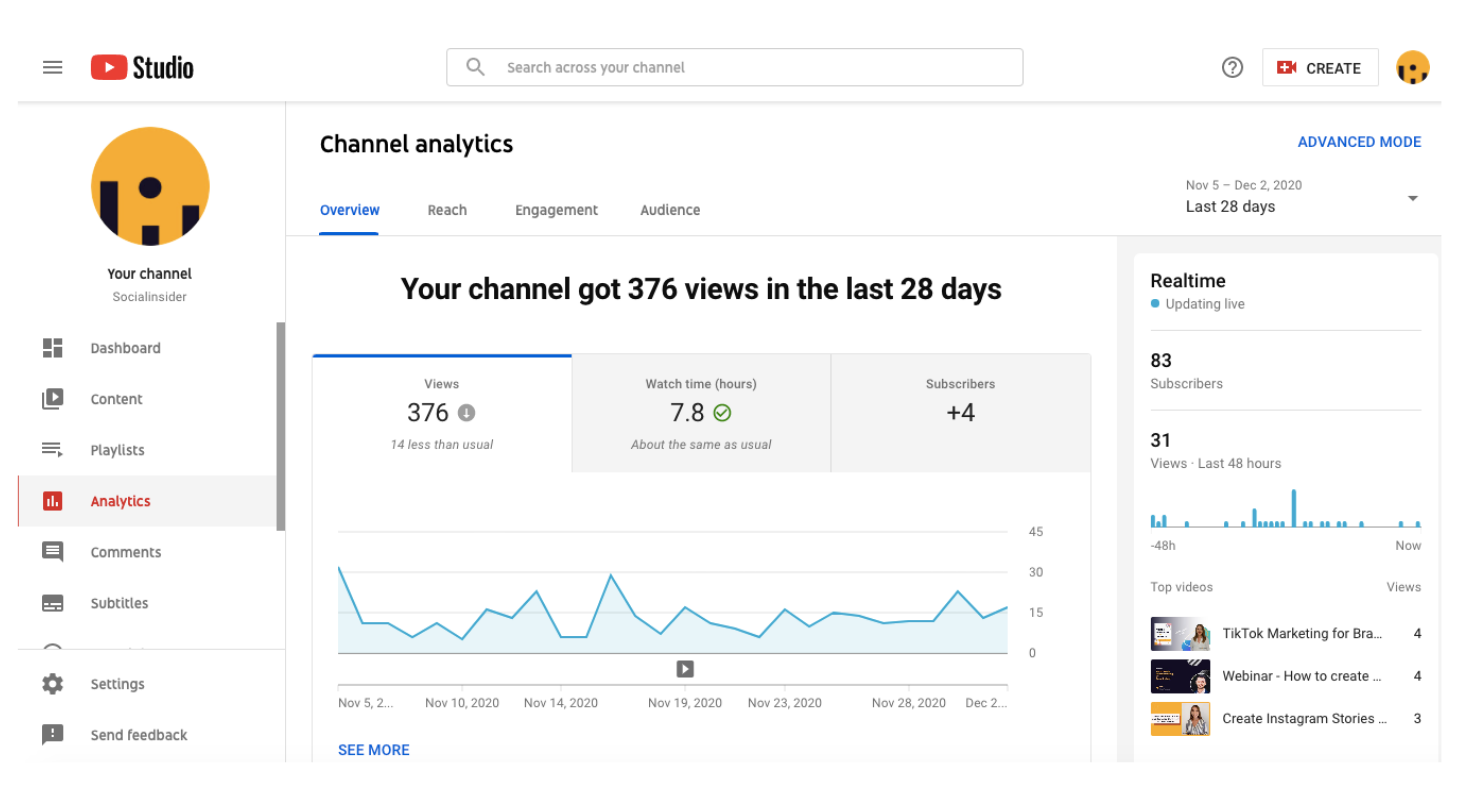
No comments:
Post a Comment